The most widely used method of applying stains, varnishes and paints is spraying. Whether in workshops or factories with finishing lines Complex, to get onto the wood and form the film, the material passes through one or more spray guns. Unfortunately, there is no gun, no matter how powerful, that will transfer the lacquer to the part in 100%. This leaves a very small amount of the varnish in very small droplets in the air in the room where the spraying takes place. In the case of spray lines the problem is solved because the spraying takes place in enclosed areas connected to the exhaust system. However, when spraying is carried out in a workshop or factory, in order to avoid problems with film quality or high noxious emissions, the space must be equipped with spray booths.
What over-spray is, the factors that influence it and how it affects the varnish film and the air in the working environment
By spraying the lacquer is transformed into very fine particles. Some of these particles land on the object to be lacquered and form the film. Another part remains in the air and is lost. In the industry this is called overspray.
Over-spray depends on several factors:
- type of gun,
- his performance,
- method of application (conventional, airless, airmix, electrostatic)
- the shape of the object being finished,
- air pressure.
The amount lost ends up in the working environment making the air difficult to breathe and may even affect health if the operator is in such an environment for a long period. In addition, if the sprayed material is flammable, a high vapor concentration increases the risk of fire.
Film quality also suffers because the varnish particles dry in the air and fall onto the part before the deposited varnish film has dried. This varnish dust is embedded in the film, which becomes rough. The term "gassing" the lake film.
These inconveniences are solved if the spraying area is equipped with spray booths.
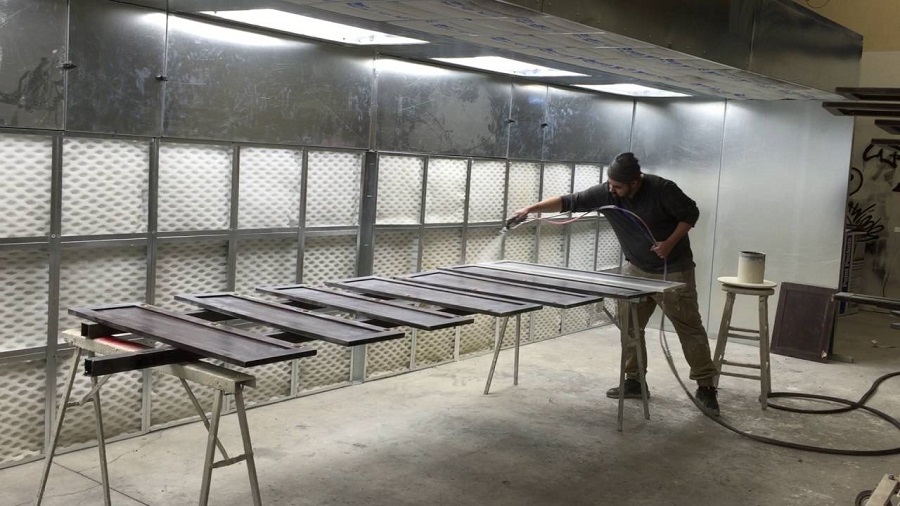
What is a spray booth
The spray booth is an installation that removes stale air from the premises and purifies it by passing it through filters. Basically, the air is sucked in by a fan and blown out, but not before the varnish particles are removed by filters.
Filters that retain fine varnish dust can be dry or wet. A dry filter consists of an agglomeration of fibers through which air is forced to pass. The dry lake will be retained by these fibers to a fairly high percentage, making the air cleaner. By the time it is released into the atmosphere, the air may pass through several such filters, with the percentage of retention increasing.
High-performance filters have several layers. The air passes through a first layer of cardboard, which traps large particles of varnish, then through a second layer of polyester, fiberglass or other effective filtering material that will trap the very fine particles.
Wet filter is a water curtain. Stale air is absorbed through the water curtain, the particles of varnish remain in the water. Substances (coagulants) are then added to the water, which precipitate the lake and collect the particles so that it can be purified and filtered.
There are simple and less high-performance booths, but also booths equipped with high-performance filters that also retain volatile organic compounds (VOCs), with heating/cooling systems for the air brought into the spray chamber or with areas designed for drying painted parts. Let's take a look at some of them.
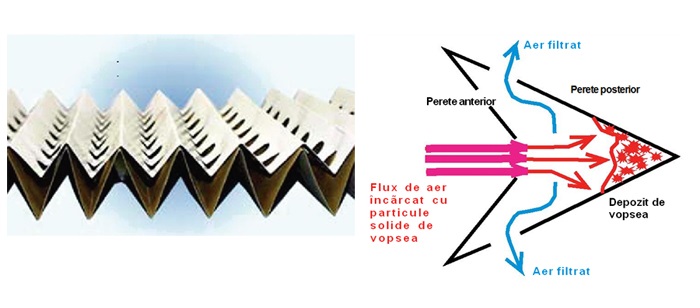
Types of spray booths
1. Absorbing walls
Using absorbent walls are the simplest way to remove varnish particles from the spray space. They are not effective if they are placed in the space where mechanical work is being done and there is a lot of wood dust. In order to obtain quality films, spraying must be done in a separate, enclosed space. A booth can work in an open space only if there is a highly effective dust suction nozzle at each machining site.
The absorbing wall is the simplest way to eliminate spray losses. Simple installations involve a metal construction, filters and a fan that sucks in the air, passes it through the filters and releases it into the atmosphere.
They can have different sizes and one, two or more spray spots. The power and number of fans varies according to the size of the booth. A booth is efficient if it is able to change the entire amount of air in the room several times in an hour. For example, an efficient booth with one spray booth, 2 m long and 2.20 m high, should have a fan with a flow rate of around 7000 mc/h.
Depending on the type of filter used, the absorber walls can be dry-filtered or water-filtered. Absorbent wall with dry filter is highly adaptable and can be installed in any space. The suction fan is mounted on the roof, behind or to the side of the cabin. In front of the absorbing wall is the place where the spraying takes place.
The purified air is collected by means of a nozzle and discharged to the outside or ducted to other more efficient filters that can retain volatile organic compounds (carbon filters).
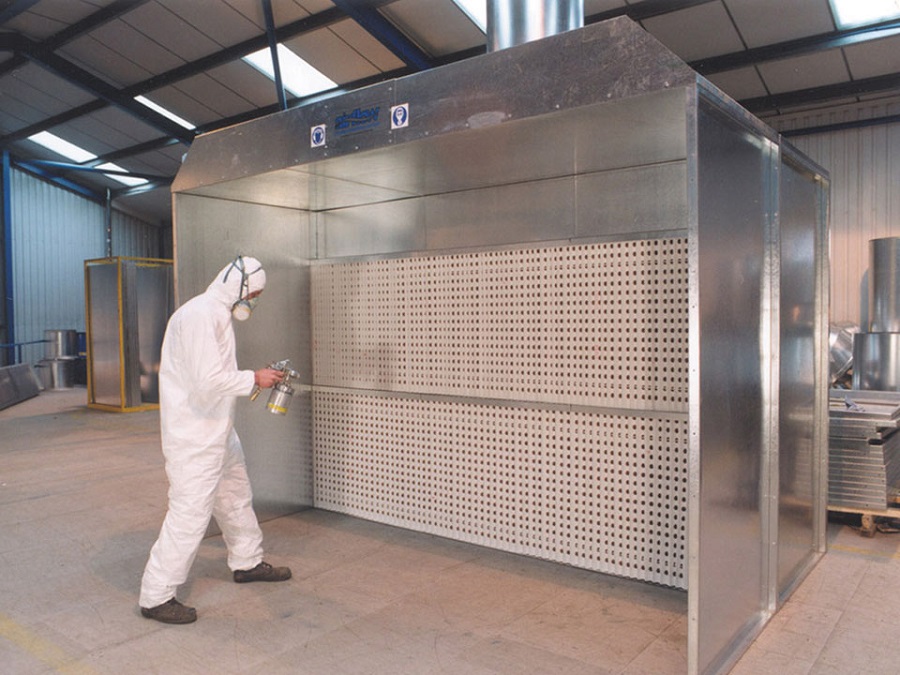
Absorbent walls with water filter have a water curtain that runs down a sheet metal wall. In the past, all factory cabins had a water filter. In order to install them there had to be an industrial water supply. Now there are cabins with recirculating water. The spray booth is installed, it is supplied with water that is recirculated for a while and then changed. The water contains coagulants that cause the residue left after filtration to settle and so can be easily removed.
The air is drawn in by a fan and passed through the water curtain. Filtration is all the more effective because the air is passed through the water several times before being released into the atmosphere. From a design point of view, there are solutions for directing the air along a certain path or for placing successive waterfalls in the path of the suctioned air. In this case too, if advanced filtration is required, the air is directed to special filters that retain hazardous substances.
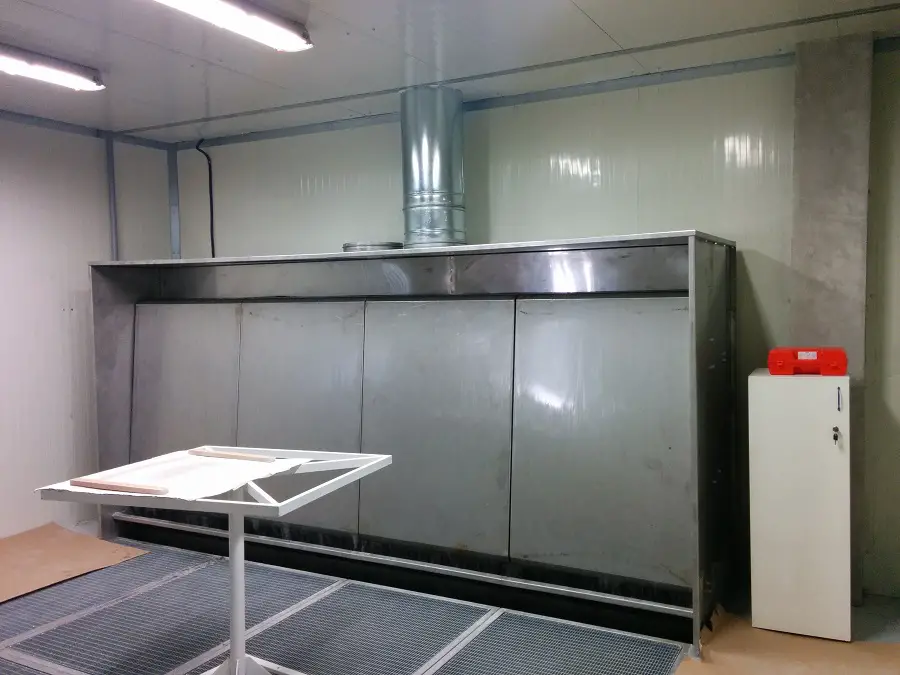
2. Spray booths for laboratories or workshops with small volumes of varnished parts
These cabins follow the principle of dry filter cabins but are small in size. They can be fitted with wheels for easy moving. The volume of air drawn in is small and the air is drawn in from inside, not from outside.
They are very adaptable booths in different shapes and sizes. They can be used in labs to test a varnish, basically being a box that your hand comes in with the spray gun and the object to be finished. They can be adapted for small workshops and factories so they take up as little space as possible.
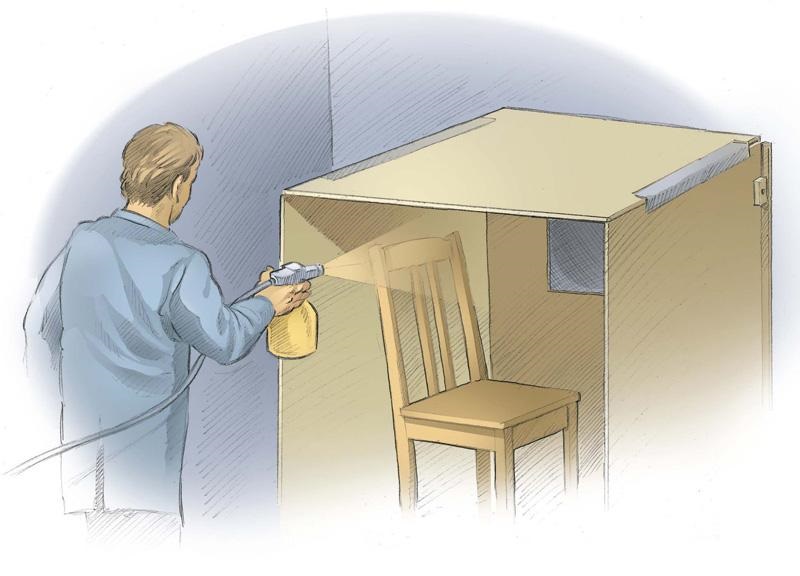
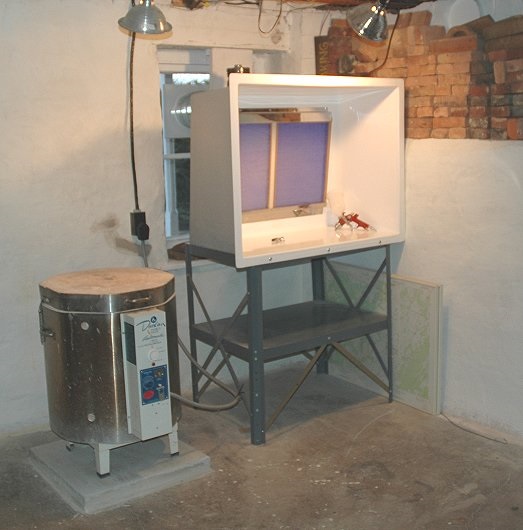
3. Pressurised spray booths
There are booths without which it is very difficult to achieve quality gloss finishes. I was saying that the enemy of spray quality is dust. If you're looking achieving a high gloss There must be no dust in the spray area, and an ordinary spray booth cannot ensure this. No matter how isolated it is from the process rooms, there will always be a source of dust. On the gloss film, the small dust particle will be greatly exaggerated in size and effect.
The problem is solved using pressurised spray booths. It is a closed enclosure in which a slight overpressure is created by introducing more air than is being exhausted. This stops dust from outside being drawn inside. For the overpressure to last over time the cabin must be very well sealed.
It is good to know that immediately after installation the air should be recirculated for a while to get rid of dust inside the cabin. Filters and insulation used inside are sources of dust and should be thoroughly shaken out and vacuumed before the actual work starts.
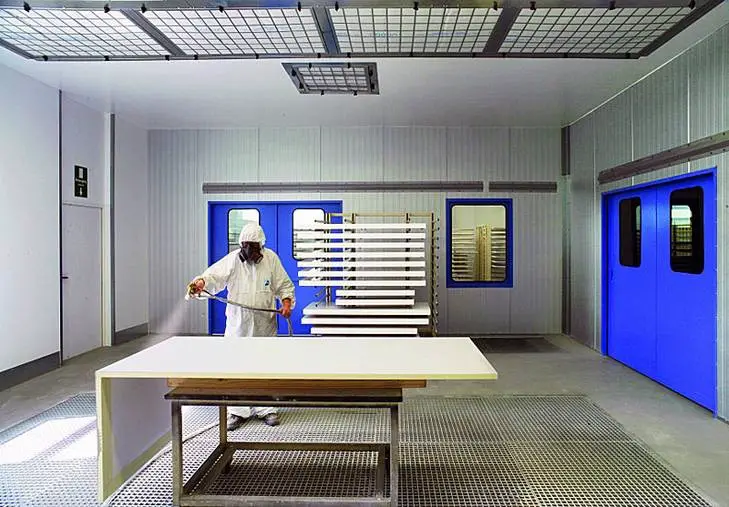

Guns with very good material-to-part transfer efficiency
Spray lacquer losses translate into actual money lost. That's why some are turning to other systems and ways of coating. In order not to lose their customers, spray gun manufacturers are continually improving their technologies to minimize losses as much as possible.
This is also the case for Sames Kremlin, whose distributor in Romania is Falk Consulting. Sames Kremlin produces guns with material transfer rates up to 80-90% and even higher. About the Xcite gun, which has a transfer efficiency of up to 86% I already told you. SFLOW™ 275 & 450 is another efficient spray gun with 81% transfer efficiency and airless application. It is lightweight and very simple to handle.
But Nanogun AIRMIX®, with a transfer efficiency of 93%, exceeds all expectations. It is electrostatically applied and very suitable for spraying medium viscosity paints. The surplus of compressed air allows the jet to reach the most hidden places and is very suitable for varnishing objects of all shapes.
Equipping a booth is mandatory if you manufacture objects that you finish by spraying. You won't get a quality coating if you apply the lacquer in an open space where lacquer particles and dust float freely. But bear in mind that a spray booth will not do wonders, and a quality spray gun is also needed to reduce spray losses considerably.
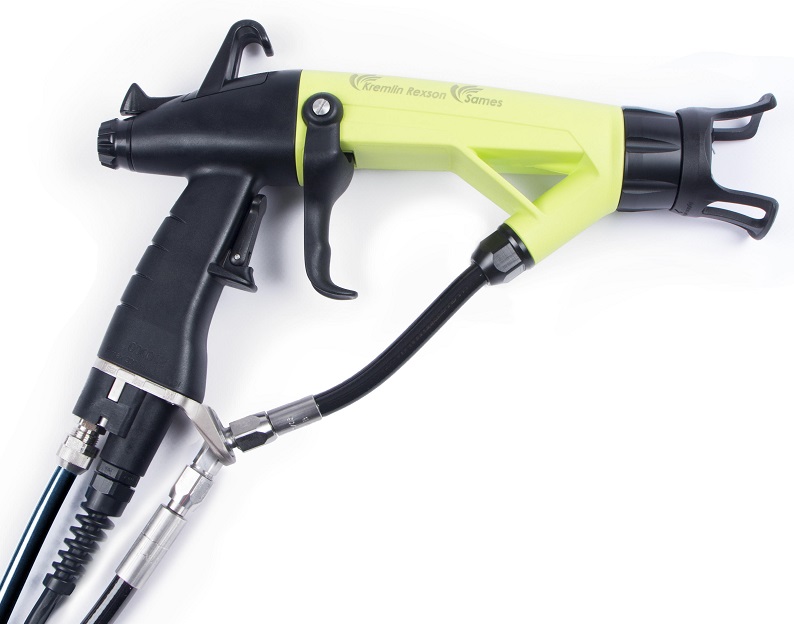
























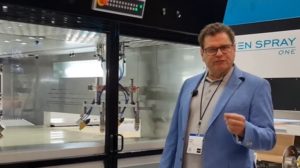

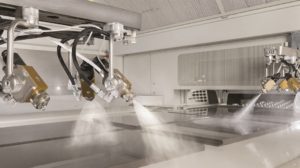
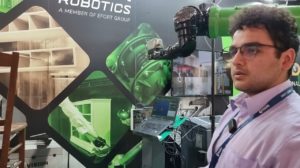

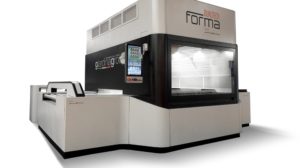
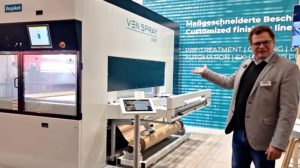



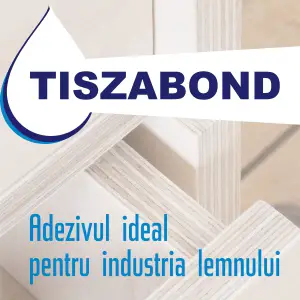
Add comment